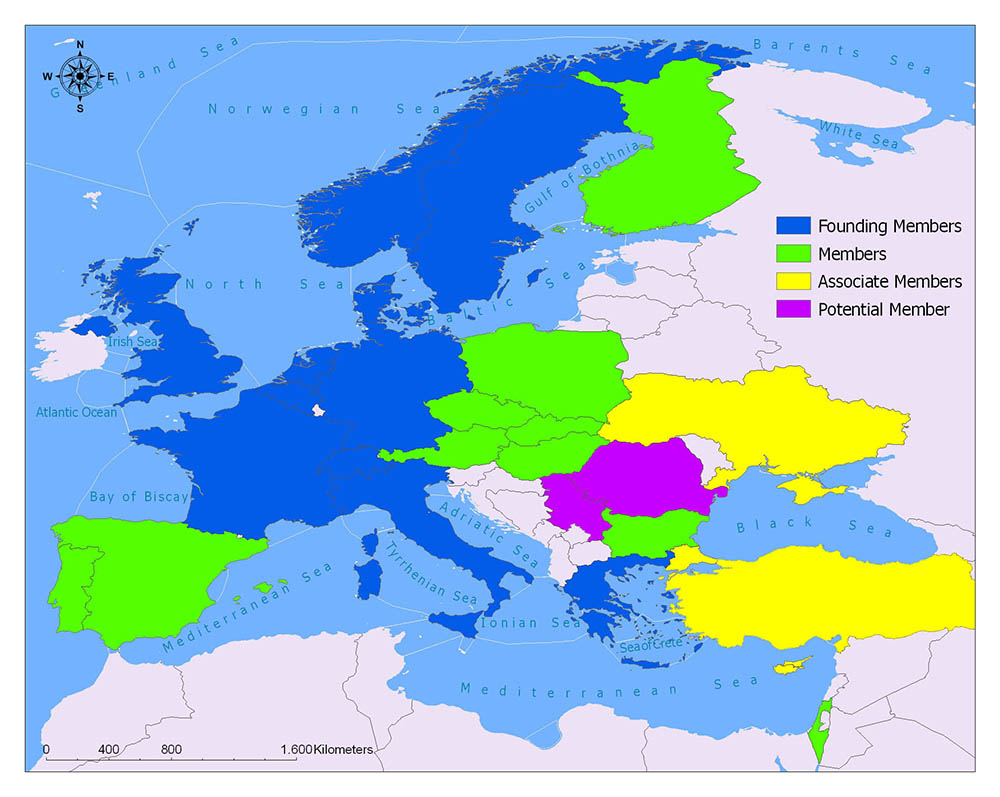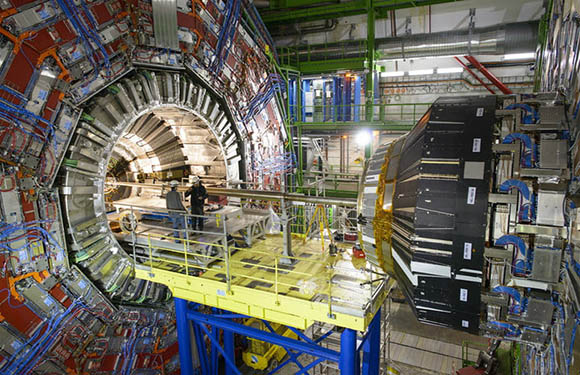The European Organization for Nuclear Research or CERN was fFounded in 1954, by 12 European countries.
The acronym CERN comes from the initials of the French expansion: Conseil European pour la Recherche Nucleaire.
Map of CERN Members

Who founded CERN?
The European countries that contributed to the establishment of the CERN in 1954 and still maintain their partnership are:
- Belgium
- Denmark
- Germany
- France
- Greece
- Italy
- Norway
- Sweden
- Switzerland
- the Netherlands
- the United Kingdom
Where was CERN Established?
This giant center, under the agricultural lands on the border between Switzerland and France, has hundreds of buildings, 3500 employees and hundreds of staff, employees and researchers.
Of these, about 100 are theoretical physicists, while others are experimental physicists or engineers. CERN has more than 10,000 physicists and engineers all over the world.
What are CERN’s Achievements?

The department where CERN is most popular is the part of the particle accelerators called Large Hadron Collider (LHC). Hereby the protons collide with tremendous heights and an artificial environment close to the universe conditions after the Big Bang.
Also Read: Countries with Nuclear Weapons
The main purpose is to find answers to many questions about the universe, existence, and creation. As predicted, in today’s world, it is impossible for protons to naturally reach that speed (99% of the speed of light). So LHC is a science and engineering monument with everything.
The LHC, which first started working with 28 GeV accelerator in 1956; In 1976, a further 450 GeV accelerator was introduced to increase its quality. As a result of the activities, new forms of matter were discovered. Scientists also made inventions which are extremely important for particle physicists such as W and Z particles.
CERN’s Achievements
- 1973: Scientists found Neutral flow in Gargamelle.
- 1983: Discovery of W and Z particles in UA1 and UA2 experiments.
- 1995: Production of the first anti-hydrogen atoms in the PS210 experiment.
- 1999: Cern scientists found CP symmetry in the NA48 experiment.
- 2010: 38 anti-hydrogen atoms were clamped for one to sixth of a second.
- 2011: The retention time of anti-hydrogen atoms increased to 15 minutes.
- 2012: In Cern, they found A 125 GeV / c2-weighted boson, similar to the Higgs boson.
CERN Members
- Founding Members; Belgium, Denmark, Germany, France, Greece, Italy, Norway, Sweden, Switzerland, Netherlands, United Kingdom, Yugoslavia
- The countries that subsequently joined CERN; Austria (1959), Spain (1961), Portugal (1985), Finland (1991), Poland (1991), Hungary (1992), Czech Republic (1992), Slovakia (1993), Bulgaria (1999) and Israel (2013) .
- Associate Members; The Republic of Cyprus (2012), Ukraine (2013) and Turkey (2014).
- Recent Member additions: Romania (2017), Serbia (2019)